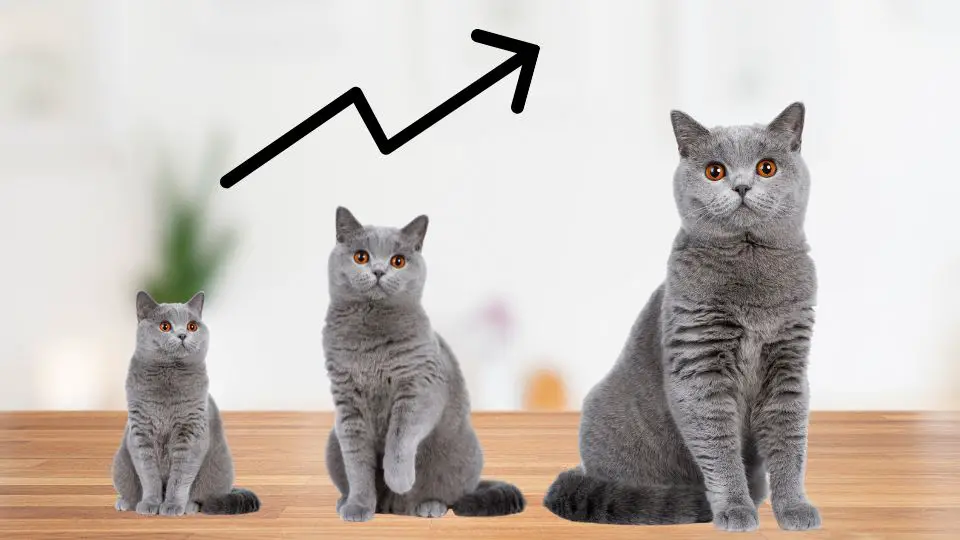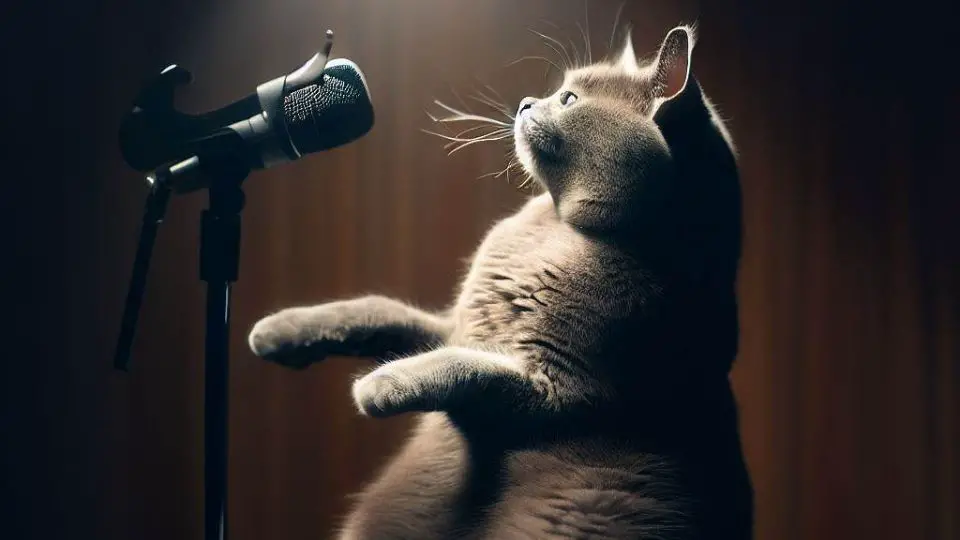If you’re a British Shorthair owner and have noticed that your feline friend is smaller than expected, you may be wondering why.
British Shorthair cats are known for their robust and sturdy build, but sometimes they may appear smaller than average. The good news is that this is not necessarily a cause for concern.
In this article, we will explore the reasons why your British Shorthair may be small and what you can do to ensure their health and well-being.
Why is my british shorthair so small?
British Shorthair cats are known for their adorable appearance and charming personalities, but sometimes, pet owners may wonder why their cat is smaller than expected. While the breed typically grows to be medium or large in size, it’s important to understand that the growth rate of British Shorthairs is slower compared to other domestic cat breeds.
From birth to adulthood, British Shorthair cats tend to mature at a slower rate compared to other breeds. During the first few weeks of life, a British Shorthair kitten will only gain about a quarter to half an ounce each day. By the time they are 3 months old, they should weigh between 2-4 pounds and at least three times their size at birth. As they continue to grow, their weight, length, and height will steadily increase until they reach their 6th-month milestone.
Note that this slow growth rate is typical for British Shorthair cats, and there is usually no cause for concern. However, it’s crucial to provide your cat with a healthy and nutritious diet, along with regular visits to the vet to ensure that they are developing properly.
Gender Differences
Male British Shorthair cats tend to be larger and heavier than females. If you have both a male and female cat and notice a difference in size, this is likely due to their gender.
Male cats can be a few inches longer in length and taller in height, which can account for their larger size. It’s important to keep this in mind when comparing the sizes of your cats, as it is not necessarily an indicator of any health issues.
Do British Shorthair cats stay small?
It is a common misconception that British Shorthair cats stay small or do not grow as much as other cat breeds. However, this is not entirely true.
British Shorthair cats do start off small as kittens, weighing only a few ounces at birth. They typically double their birth weight within 10-14 days and continue to gain weight at a slow and steady pace of about a quarter to half an ounce each day. At three months old, a British Shorthair kitten should weigh around 2-4 pounds and will continue to grow steadily until they reach six months old.
Most British Shorthair cats will reach an adult weight of 6-7 pounds, which is considered to be a healthy weight range for this breed. However, remember what we said earlier, that British Shorthair cats mature at a slower rate compared to other domestic cat breeds.
They may appear small while in the kitten life stage and even in the junior life stage. In fact, they grow so slowly that it can be concerning or alarming for pet owners.
Genetics
Genetics play a significant role in determining a cat’s size, and this is true for the British Shorthair breed. Several genes, both dominant and recessive, can influence a cat’s size.
One of the most crucial factors affecting a cat’s size is its parents’ size, as kittens often inherit size genes from their parents. For example, if both parents are large, it is likely that their offspring will also grow up to be large. However, this is not always the case, and there may be other factors at play.
Recessive genes can also impact a cat’s size, meaning that both parents must carry the gene for it to manifest in their offspring. In the case of the British Shorthair, the gene responsible for the breed’s characteristic stocky build is a recessive gene. Therefore, both parents must carry the gene for their offspring to inherit it.
Other recessive genes can also affect a cat’s size, such as the gene responsible for dwarfism. Cats with this gene are significantly smaller than their non-dwarf counterparts and may have other physical abnormalities.
Nutrition
Nutrition plays a critical role in the growth and development of a British Shorthair, and it can have a significant impact on their size. A well-balanced and nutritious diet can help your cat reach their full potential, while a poor diet can stunt their growth and lead to health problems.
To ensure your British Shorthair is getting the right nutrition, you should choose a high-quality cat food that is specifically formulated for their age and activity level. Kittens, adult cats, and senior cats have different nutritional needs, so you should choose food that is appropriate for their life stage.
Also remember to pay attention to the ingredients. Look for cat foods that are high in protein and low in fillers like corn and wheat. Cats are obligate carnivores, which means they need meat to thrive, so choose foods that have a high percentage of animal-based protein.
You should also make sure your cat has access to fresh water at all times. Dehydration can lead to health problems and can also stunt growth.
What age is a British Shorthair fully grown?
British Shorthair cats have a slower rate of maturation compared to other domestic cat breeds. Typically, they reach their full size and weight between the ages of two and three years old. However, some British Shorthairs may not reach their full size until they are five years old.
During their growth stages, monitor their weight and size to ensure they are growing properly. Regular check-ups with a veterinarian can help identify any potential health issues that may impact their growth and development.
How big should my British Shorthair be?
The weight range may vary depending on the cat’s gender, diet, genetics, and overall health. It’s important to consult with a veterinarian if you have any concerns about your cat’s weight or growth. Here is a general weight range for British Shorthair cats:
| Age (months) | Weight (pounds) |
|---|---|
| 3 | 2-4 |
| 6 | 6-8 |
| 12 | 9-12 |
| 18 | 10-14 |
| 24 | 12-15 |
| 30 | 12-15 |
| 36 | 12-15 |
Conclusion
In conclusion, British Shorthair cats are known for their slow maturation process and may appear small during their kitten and junior stages. However, with time, patience, and proper nutrition, they can grow to be a medium-sized or even large lap cat.
As a responsible pet owner, it is important to provide your British Shorthair with a balanced diet, regular vet checkups, and a comfortable and stimulating environment to help them reach their full potential. Remember, if you have any concerns about your cat’s size, it is always best to consult with your veterinarian to rule out any underlying medical conditions.







